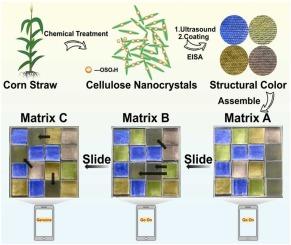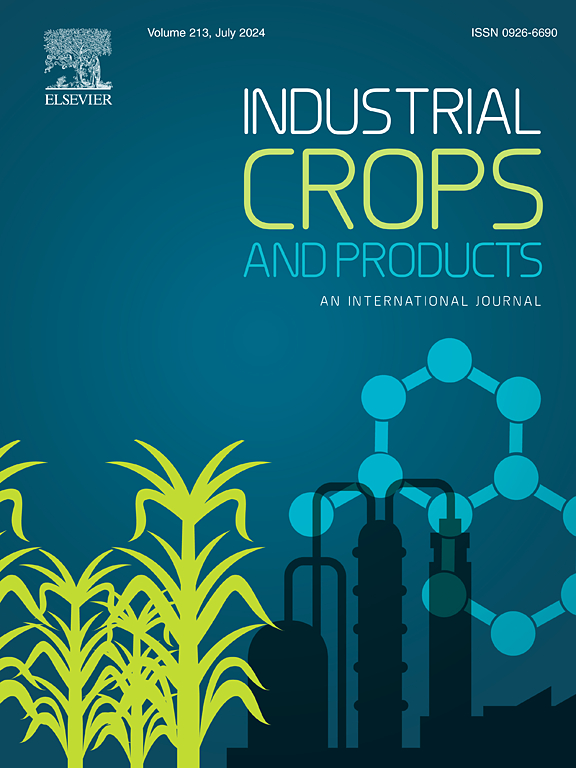Corn straw cellulose nanocrystals: Preparation, structural coloration, and high-level anti-counterfeiting
IF 5.6
1区 农林科学
Q1 AGRICULTURAL ENGINEERING
引用次数: 0
Abstract
Cellulose nanocrystals (CNCs) are drawing increasing attention for offering versatile and sustainable building blocks that can self-organize into lyotropic cholesteric liquid crystal phases in solid materials. However, their preparation has been limited to raw material sources holding significant economic and ecological value in agriculture and industry. Considering the high-value utilization of agricultural waste straws as well as the sustainable development of optical cellulosic materials, here, we demonstrate the extraction and preparation of CNCs capable of self-assembling into structural color arrays from waste corn straws. Notably, through a series of chemical treatments and controlled acid hydrolysis, straw CNCs with moderate dimension and surface charge density are obtained. In this case, the requirements of particle size, surface charge, and rheological properties are clarified for the self-assembly into helicoidal orders, and the kinetic arrest mechanism for generating structural colors is discussed. Furthermore, by utilizing wide structural color regulation and the left-handed cholesteric nature, and combining this with the “Coloring Klotski Puzzle” for the first time, a multi-color array having significant storage information capacity is fabricated, realizing advanced multi-level encryption. These findings pave the way for high-value utilization of agricultural wastes and sustainable development of photonic cellulosic materials.

玉米秸秆纤维素纳米晶:制备、结构着色及高水平防伪
纤维素纳米晶体(CNCs)因其在固体材料中可自组织成溶性胆固醇甾相的多用途和可持续的构建模块而受到越来越多的关注。然而,它们的制备仅限于在农业和工业中具有重要经济和生态价值的原料来源。考虑到农业废弃秸秆的高价值利用以及光学纤维素材料的可持续发展,我们展示了从废弃玉米秸秆中提取和制备能够自组装成结构色阵列的cnc。值得注意的是,通过一系列的化学处理和受控的酸水解,获得了尺寸适中、表面电荷密度适中的秸秆cnc。在这种情况下,明确了粒径、表面电荷和流变性能对螺旋有序自组装的要求,并讨论了产生结构色的动力学阻滞机制。在此基础上,利用宽结构颜色调节和左旋胆脂性,首次与“着色Klotski谜题”相结合,构造了具有较大信息存储容量的多色阵列,实现了高级的多级加密。这些发现为农业废弃物的高价值利用和光子纤维素材料的可持续发展铺平了道路。
本文章由计算机程序翻译,如有差异,请以英文原文为准。
求助全文
约1分钟内获得全文
求助全文
来源期刊

Industrial Crops and Products
农林科学-农业工程
CiteScore
9.50
自引率
8.50%
发文量
1518
审稿时长
43 days
期刊介绍:
Industrial Crops and Products is an International Journal publishing academic and industrial research on industrial (defined as non-food/non-feed) crops and products. Papers concern both crop-oriented and bio-based materials from crops-oriented research, and should be of interest to an international audience, hypothesis driven, and where comparisons are made statistics performed.
 求助内容:
求助内容: 应助结果提醒方式:
应助结果提醒方式:


